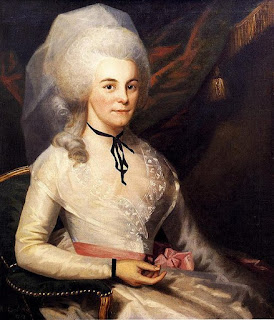This month’s study is on Miriam. Moses’ older sister, we first meet her as a young girl who watches over her baby brother and leads Pharaoh’s daughter to Jochebed. As an adult, she is known as a prophetess, and an able leader. She leads the women in a song and dance of worship after the parting of the Red Sea and their escape from Pharaoh’s army. However, she is also a jealous person who openly criticized Moses’ leadership. What is her story? What were her motives to criticize Moses? Were they honorable or selfish in nature? What does her story tell us about God’s forgiveness?
Her name means bitterness. Miriam’s character is one of fortitude and wisdom, a leader of God’s people at a critical moment, she led a celebration. The first mention of dancing in Scripture is linked to Miriam and her leading the women in celebration. Dancing was a form of worship and linked to joy and happiness. Miriam danced and sang a song of celebration, “Sing to the Lord, for his is highly exalted. The horse and its rider he has hurled into the sea” (Exodus 15:21) and even spoke God’s words to his people. She played an instrumental role in the deliverance of God’s people. However, she thought she and Aaron, their brother, deserved an equal share in his authority, an equal share in how the people are led. She spoke against Moses’ authority. She was stuck with leprosy for her pride and insubordination. She was banned to the outskirts of the camp for seven days for her sin. She was even denied entry to the Promise Land.
Why was Miriam punished with leprosy and banishment for seven days? Her motives behind her criticisms. Criticisms and confrontations can be well-placed. Jesus tells us in Luke 17:3, “If your brother sins, rebuke him, and if he repents, forgive him.” However, sometimes our criticisms and confrontations are not for correction, but for our own selfish motives. What was Miriam’s motive? Jealousy. She was jealousy of her baby brother who had an honored position with the Lord and was chosen as leader of the Israelites. Moses also married Zipporah, a Cushite woman, which meant that Miriam was not the most important or influential woman in Moses’ life. Before we criticize, we need to consider our motives. Are we criticizing to correct or to wound? Sometimes criticism, under the guise of constructive criticism, hides a destructive jealousy. The motives behind our criticisms are often more important to deal with than the criticism itself. Jesus speaks to our motives in Matthew 7:3-5 and calls us to be discerning in our criticisms, to be focused on correcting rather negative.
Miriam’s story is just another example of God’s forgiveness. He is willing to forgive sin. He wants to forgive us of our sins. When we repent, God is faithful and will forgive us. 1 John 1:9 says, “If we confess our sins, he is faithful and just and will forgive us our ins and purify us from all unrighteousness.” Even though Miriam was punished for her sin, she is not remembered for her sin. Micah 6:4 mentions her as being sent by God along with Moses and Aaron to lead the people from Egypt. Many people may think they haven’t been forgiven because they still suffer from sin’s results. However, repentance from sin does not keep the consequences from happening. Just as Miriam was forgiven for her sin, she still faced the consequences of her actions. Just as David was forgiven for his sin, he had to suffer the consequences (2 Samuel 12:13-14). We are forgiven, but we must face the earthly consequences of our actions.
In conclusion, Miriam’s story is one of greatness and one of sin. She is remembered as a prophetess and a leader. She danced in celebration and worship. She is also a lesson in examining our motives when we criticize or confront others. Are we doing so to correct or to wound? Are we concerned or are we jealous? Her story is also an example of God’s promise to forgive when we repent our sins. The Bible is filled with examples of God’s promise to forgive. One of my favorite verses is Psalm 103:12, “As far as the east is from the west, so far has he removed our consequences from us.”


































